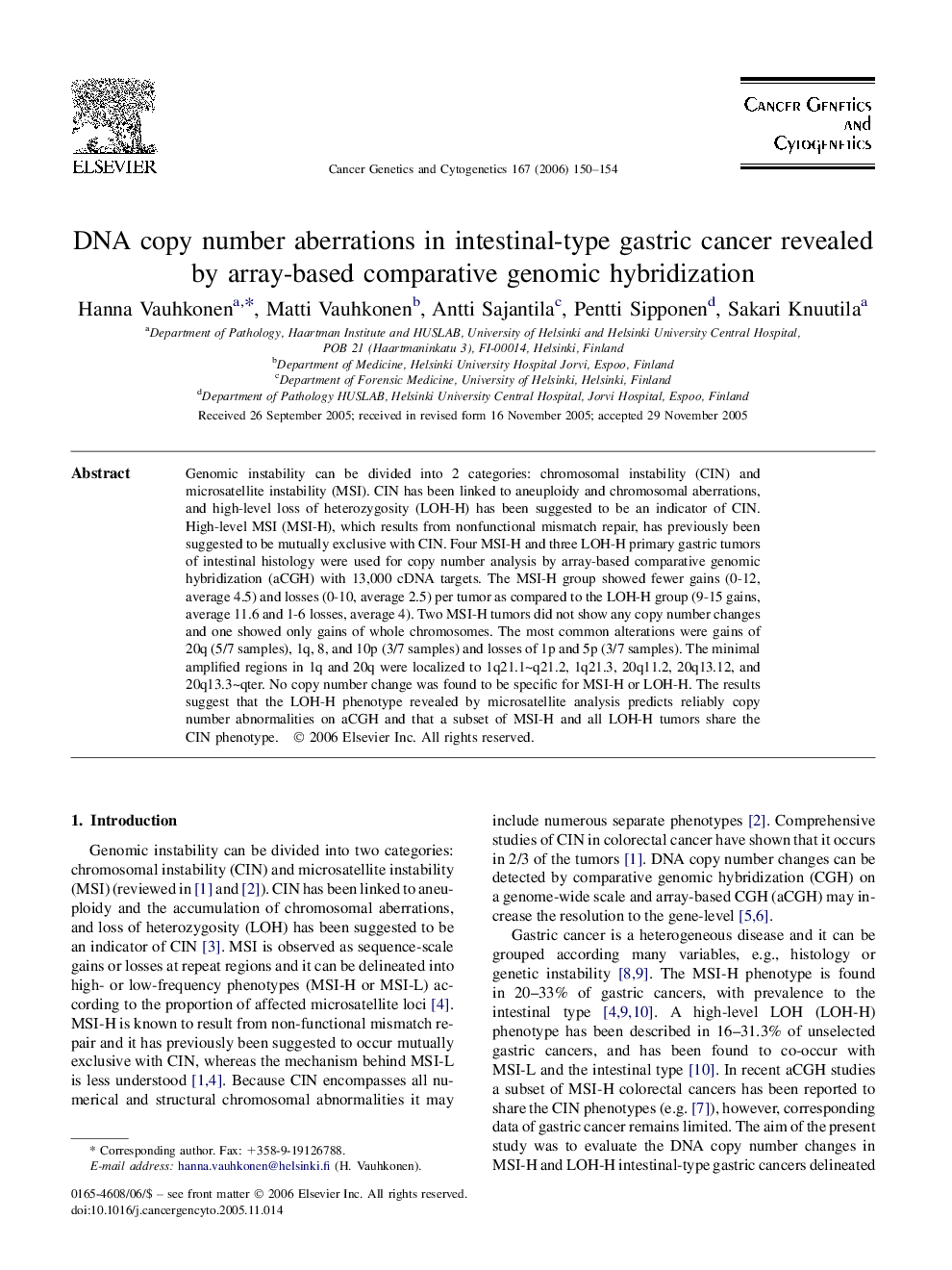| Article ID | Journal | Published Year | Pages | File Type |
|---|---|---|---|---|
| 2112157 | Cancer Genetics and Cytogenetics | 2006 | 5 Pages |
Abstract
Genomic instability can be divided into 2 categories: chromosomal instability (CIN) and microsatellite instability (MSI). CIN has been linked to aneuploidy and chromosomal aberrations, and high-level loss of heterozygosity (LOH-H) has been suggested to be an indicator of CIN. High-level MSI (MSI-H), which results from nonfunctional mismatch repair, has previously been suggested to be mutually exclusive with CIN. Four MSI-H and three LOH-H primary gastric tumors of intestinal histology were used for copy number analysis by array-based comparative genomic hybridization (aCGH) with 13,000 cDNA targets. The MSI-H group showed fewer gains (0-12, average 4.5) and losses (0-10, average 2.5) per tumor as compared to the LOH-H group (9-15 gains, average 11.6 and 1-6 losses, average 4). Two MSI-H tumors did not show any copy number changes and one showed only gains of whole chromosomes. The most common alterations were gains of 20q (5/7 samples), 1q, 8, and 10p (3/7 samples) and losses of 1p and 5p (3/7 samples). The minimal amplified regions in 1q and 20q were localized to 1q21.1â¼q21.2, 1q21.3, 20q11.2, 20q13.12, and 20q13.3â¼qter. No copy number change was found to be specific for MSI-H or LOH-H. The results suggest that the LOH-H phenotype revealed by microsatellite analysis predicts reliably copy number abnormalities on aCGH and that a subset of MSI-H and all LOH-H tumors share the CIN phenotype.
Related Topics
Life Sciences
Biochemistry, Genetics and Molecular Biology
Cancer Research
Authors
Hanna Vauhkonen, Matti Vauhkonen, Antti Sajantila, Pentti Sipponen, Sakari Knuutila,
